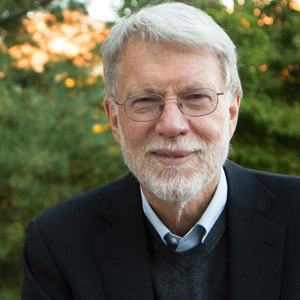For my parents, I told the graduates at Arizona State’s commencement this year, the typical career trajectory was like a steamship’s—fire up the engines and full speed ahead. For my generation, the course was more like a sailboat’s—through skillful tacking, we got pretty close to where we thought we would. But today’s graduates need be more like whitewater kayakers, quickly analyzing and responding to an ever-changing flow, knowing and trusting themselves so they won’t panic.
John Seely Brown, researcher, author, and lecturer, was chief scientist at Xerox and director of its Palo Alto Research Center.

They’re on their own on that river. But before they push off from shore we must help them more. STEM education is important, but we need to take both craftsmanship and the arts and humanities much more seriously. When I ran Xerox’s Palo Alto Research Center, which helped pioneer everything from the personal computer to the laser printer to spelling checkers, I always felt that what gave us an edge was real engineers—craftsmen who could actually build amazing things—working shoulder to shoulder with researchers. They were paid the same and treated the same. That’s how we produced the Alto, the desktop computer that so impressed Steve Jobs.
This close coupling enabled us to build new tools that were invaluable for building the future. This is also happening now at CERN, the European Organization for Nuclear Research. The director there recently agreed that what enables CERN to unpack the mysteries of the universe is the craftsmen working alongside some of the world’s best theoretical and experimental physicists.
Equally important is the role of the arts and humanities in some kind of complicit relationship with STEM. I do not mean STEAM (the addition of the arts to STEM to ‘‘humanize’’ it). I mean hardcore arts/humanities—the kind of thinking and research that enables us to see differently, learn from the past, become empathic leaders, and understand how meaning and identity—the DNA of culture—are created. Without these we are lost.
Now to the workplace: Given this era of accelerating change, one in which the half-life of many skills can be as short as five years, corporate training centers no longer work; returning to community colleges every five years is not viable. We must re-invent the workplace as a learningscape.’ We need to scale the efficacy of apprenticeship by radicalizing peer-based, social learning, and by structuring work groups with the kind of diversity of viewpoints and approaches that drives learning, with and from each other. Technology can assist this—I’m imagining a strange twist on eHarmony, in which we would use algorithms to match employees and create agile and diverse work teams where people could learn from each other. In short, the algorithms would help orchestrate serendipity. This is clearly not the domain of MOOCs or existing social media platforms. We need more. And let’s build really good intelligent mentoring systems while we’re at it.
And let’s empower learning through participation in the rich resources of our surrounding ecosystems, be they urban learning initiatives such as “Cities of Learning’’—a new movement in which employers, libraries, and museums are wired together to help kids find their interests outside school and pick up new skills—or networks of partners in the corporate world. A powerful example of this kind of learning is the use of GitHub and/or other open source communities. Or another: A rather conservative company, SAP, created an extended open source network that has a couple million participants who are learning with and from each other. Or consider Hacker DoJo, a community in Silicon Valley where people share digital technical skills, or the guild networks around massively multi-player online games where thousands of new ideas are created, shared, and tested each night. These networks are global and diverse.
While focusing on learning is fine, another real challenge is unlearning. We know that in this age of exponential change, global influences and zigzag careers, the ability to unlearn in order to learn anew, and re-frame in order to see differently is paramount. Current schooling, at every level, hasn’t even touched this yet. For this, we need to re-visit the role of serious play—say, designing a board game, with students experimenting, tinkering with the rules, planning strategy, pushing the boundaries.
Finally, as Scott Cook mentioned in his recent piece for this series, we need to focus on institutional innovation writ large. As we have learned the hard way, you can’t fight a network with a hierarchy. Nor can a hierarchy have the fluidity and agility that is needed for an exponential world. The institutional forms of tomorrow will have to seek the power and efficacy of the network and tap into the imagination in all of us. Think freestyle chess or the kind of generative dance that is possible between humans and machine or between AI (artificial intelligence) and IA (augmented intelligence). This truly is a new world and we must help the kayakers out there survive and even thrive on that river.

For the Future of Work, a special project from the Center for Advanced Study in the Behavioral Sciences at Stanford University, business and labor leaders, social scientists, technology visionaries, activists, and journalists weigh in on the most consequential changes in the workplace, and what anxieties and possibilities they might produce.





